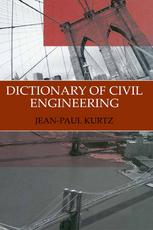

Most ebook files are in PDF format, so you can easily read them using various software such as Foxit Reader or directly on the Google Chrome browser.
Some ebook files are released by publishers in other formats such as .awz, .mobi, .epub, .fb2, etc. You may need to install specific software to read these formats on mobile/PC, such as Calibre.
Please read the tutorial at this link: https://ebookbell.com/faq
We offer FREE conversion to the popular formats you request; however, this may take some time. Therefore, right after payment, please email us, and we will try to provide the service as quickly as possible.
For some exceptional file formats or broken links (if any), please refrain from opening any disputes. Instead, email us first, and we will try to assist within a maximum of 6 hours.
EbookBell Team

4.3
8 reviewsI am pleased to present a work which marks a milestone in the history of public works and, more precisely, in that of permanent structures—a comprehensive dictionary of Civil Engineering terms. Since the beginning of time, Man has always tried to find a means to clear the obstacles which nature erected to displace him. With the first tree trunk thrown across a river, man sought to improve the crossing structure. After the invention of the wheel, and to satisfy his thirst for conquest (Roman ways), and comfort (aqueducts), man built bridges that became a preremptory necessity to move quickly. Thus, Man started to build wooden and masonry works. With the passing centuries, the builders became masters in the art of building masonry works. Then came the Industrial Revolution and the advent of the steel (1864), which was closely followed by the invention of the reinforced concrete (1855). The need for railways and improving the road network inspired great works of crossing such as viaducts and tunnels. The boom of the railway network and the development of the car required the construction of an increasing number of new structures. This phenomenon continues today with hundreds of structures built each year throughout the world.